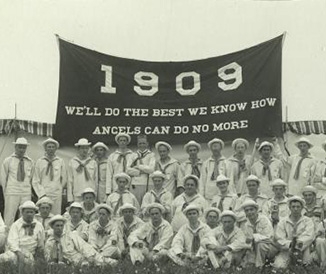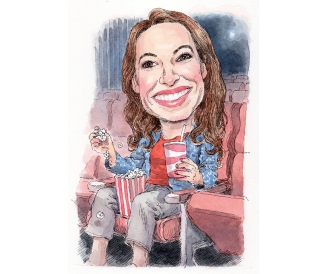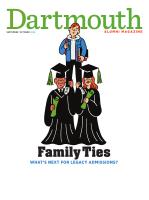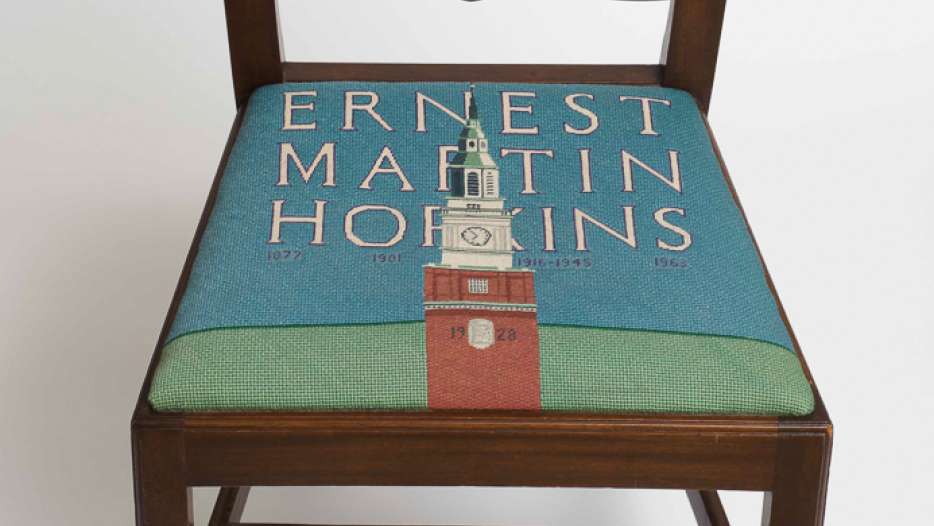
Ernest Martin Hopkins, class of 1901 (1916-45) The building of Baker Library was one of the greatest achievements of his administration.
View full image
1 / 17
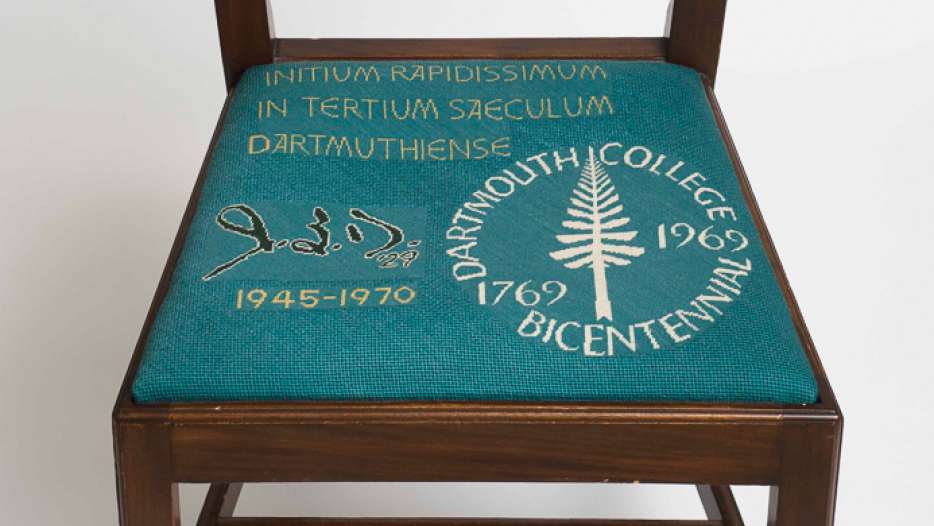
John Sloan Dickey ’29 (1945-70) Accompanying Dartmouth’s bicentennial symbol are these words, In Latin: “A running start into the third century of Dartmouth.” That’s also Dickey’s signature at left.
View full image
2 / 17
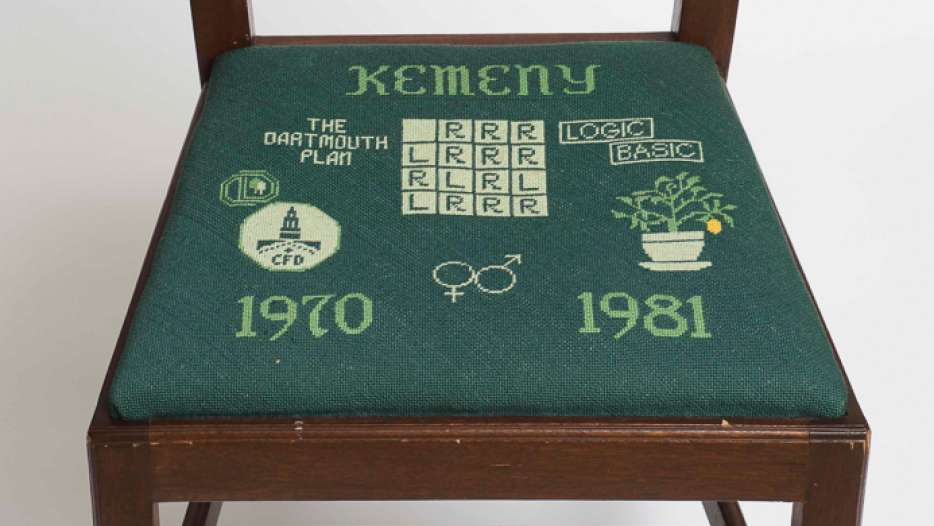
John Kemeny (1970-81) The Dartmouth Plan was adopted in 1971 to make it possible to admit female students without increasing dormitory space. The four-by-four square refers to the 15 quarters of a student’s career as an undergraduate (L=on leave, R=in residence).
View full image
3 / 17
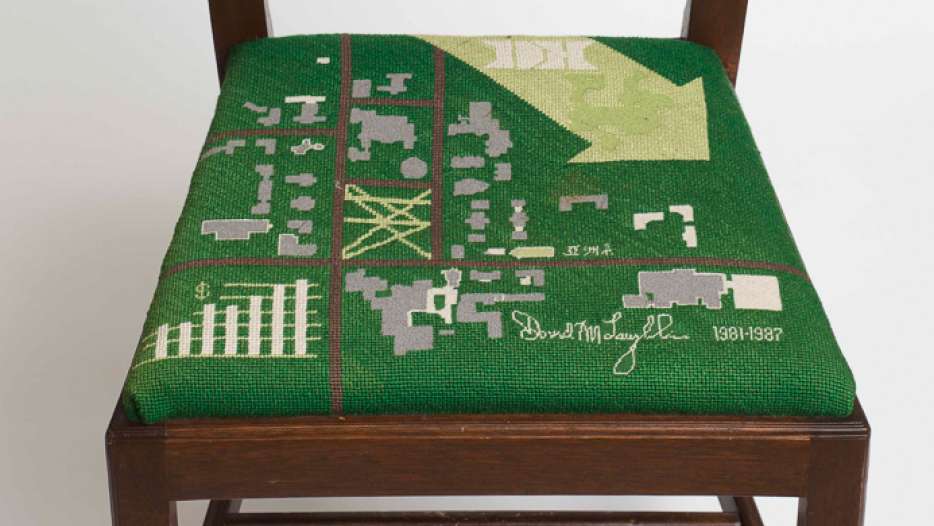
David Thomas McLaughlin ’54. Tu’55 (1981-87) A campus map portrays major programs and physical changes under President McLaughlin. New buildings are white and include the Faculty Club, Rockefeller Center, Hood Museum, East Wheelock dormitories and the Berry Sports Center. The bar graph represents the rise in the endowment during McLaughlin’s presidency.
View full image
4 / 17

James Oliver Freedman (1987-98) This cushion is crammed with symbolism: The book background acknowledges Freedman’s love of books. A check represents the Will to Excel capital campaign. Student figures of the class of 1999 represent achieving parity in the numbers of male and female students. The world map highlights an expanded foreign study program.
View full image
5 / 17
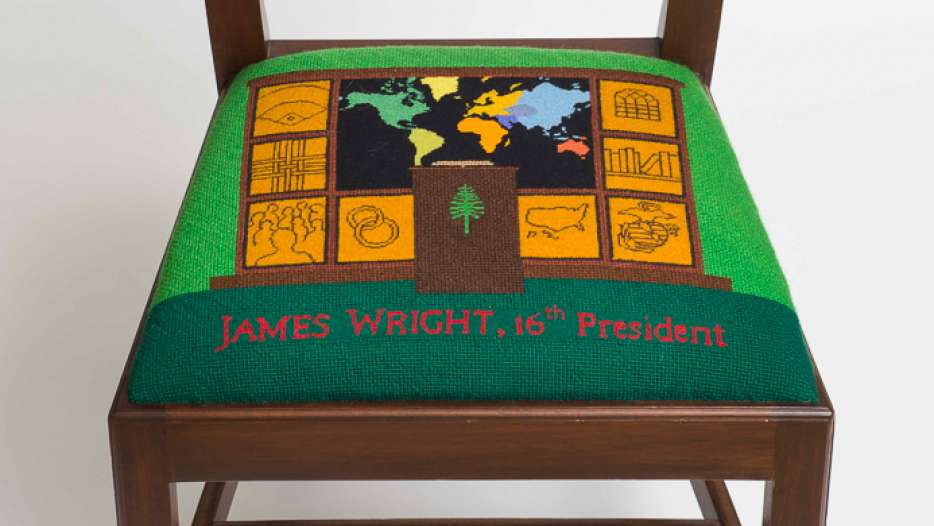
James Edward Wright (1998-2009) A baseball diamond represents Wright’s favorite sport. The U.S. Marines’ eagle, globe and anchor symbol represent his service.
View full image
6 / 17
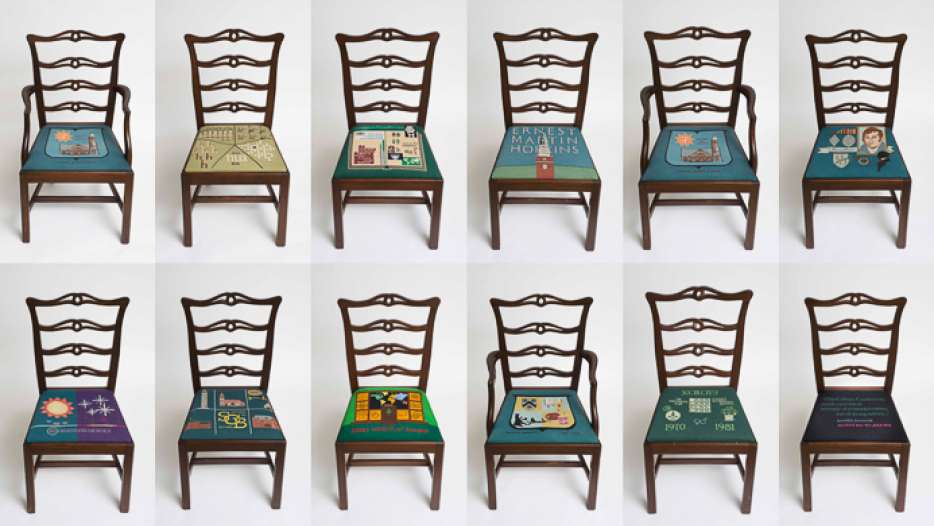
View full image
7 / 17
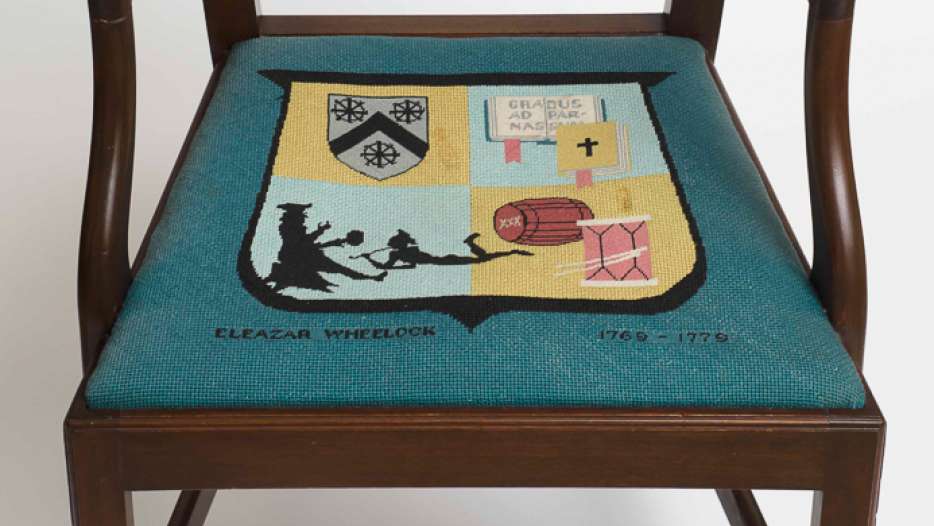
Eleazar Wheelock (1769-79) The College founder’s seat cushion features the Wheelock coat of arms (three Catherine wheels), a bible, drum and a scene of Wheelock Eleazar with a Native American.
View full image
8 / 17

John Wheelock, class of 1771 (1779-1815) Twelve gold stars surrounding Dartmouth Hall’s tower represent the 12 trustees of Dartmouth. The cushion also includes the Wheelock coat of arms and Wheelock’s signature.
View full image
9 / 17
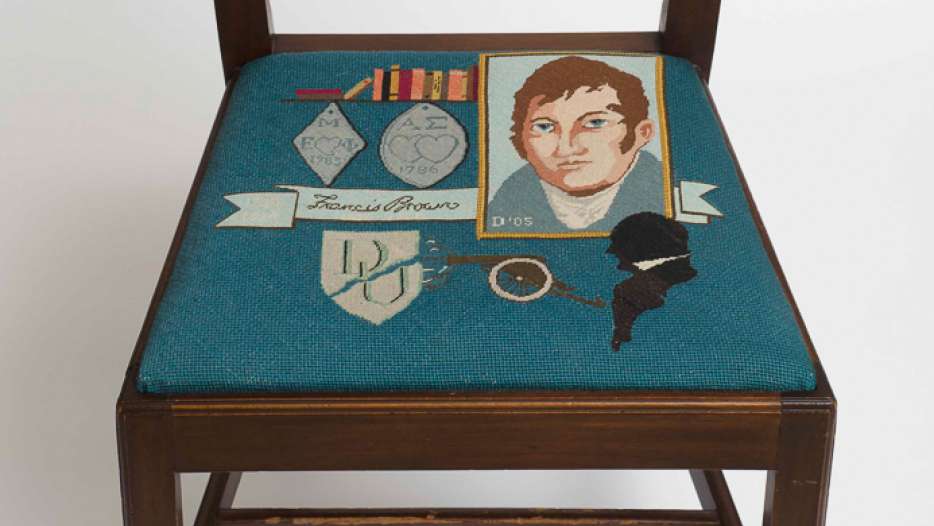
Francis Brown, class of 1805 (1815-20) The cannon and profile of Daniel Webster, class of 1801, represent the famous Dartmouth College case that eliminated the idea of Dartmouth University. Badges of the United Fraternity and the Social Friends indicate they were important societies of that era.
View full image
10 / 17
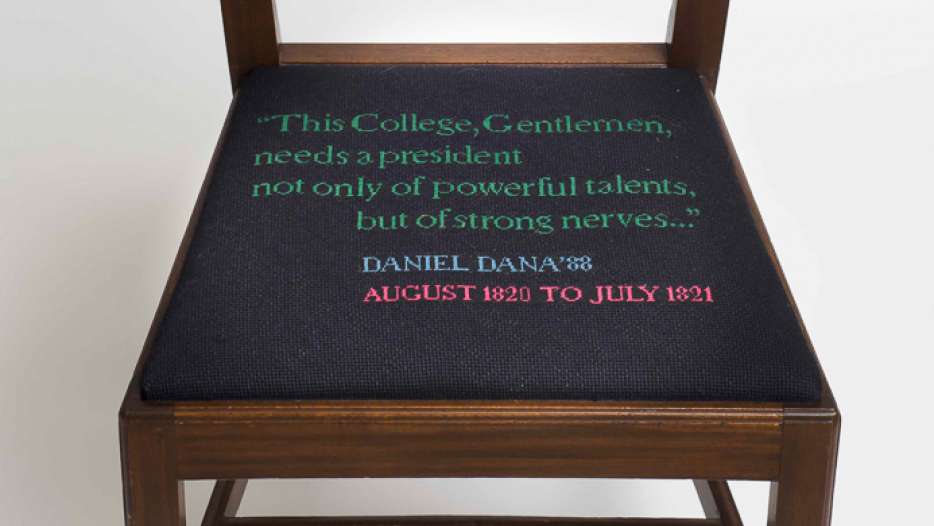
Daniel Dana, class of 1788 (1820-21) One sentence from his letter of resignation to the trustees says it all!
View full image
11 / 17
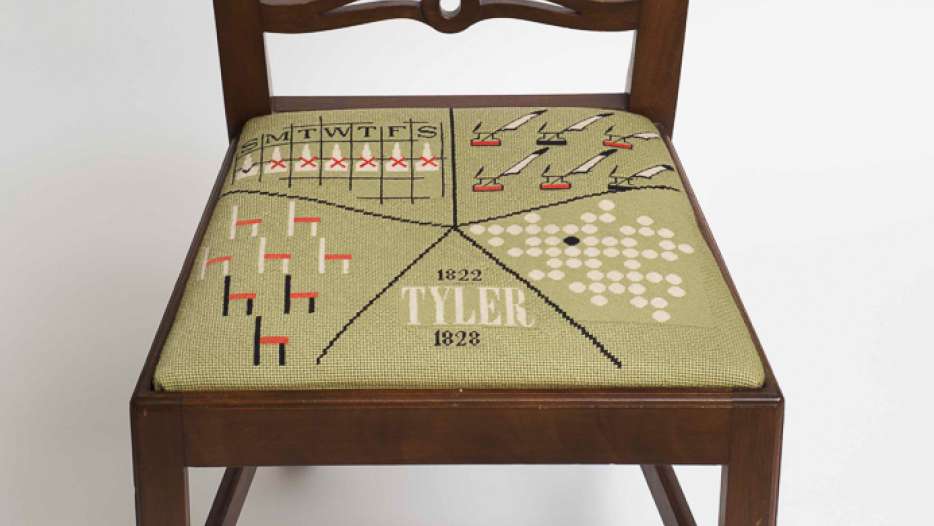
Bennet Tyler (1822-28) During the six years of his administration the College was “in the red” for four years, “in the black” for two. Chairs represent the increase in the number of professorships from three to five. Dots represent the student body at that time—and its one black student.
View full image
12 / 17
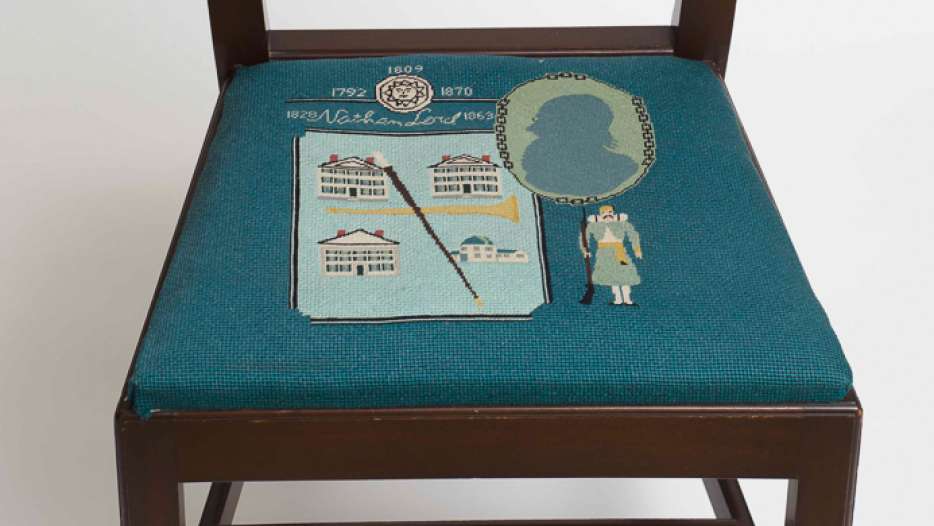
Nathan Lord (1828-63) Shackles around the silhouette represent Lord’s belief that slavery was ordained by God. The buildings—Wentworth, Reed, Thornton and the observatory—were built during the Lord administration. He carried a mahogany cane. The trumpet represents the horn used by students to annoy unpopular professors by making a din under their windows late at night. The soldier represents a member of the “Dartmouth Zouaves” regiment instituted on campus just before the Civil War.
View full image
13 / 17
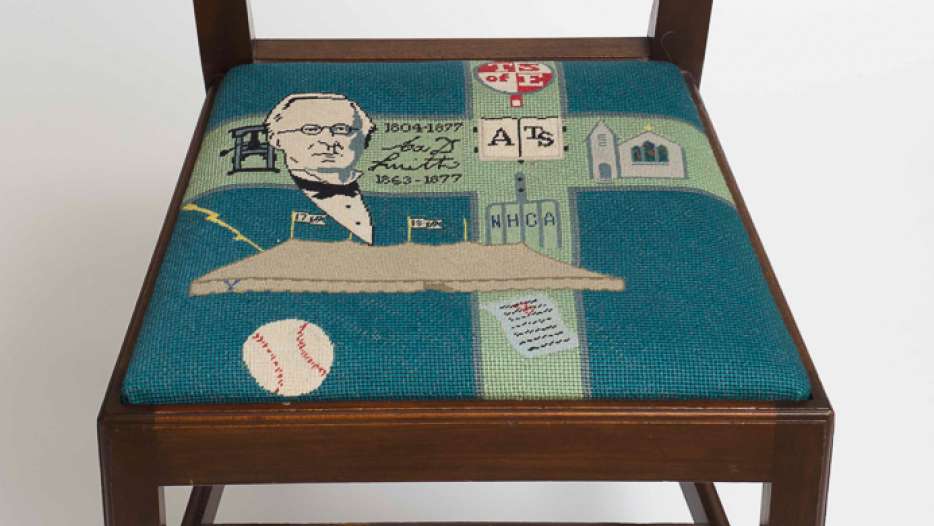
Asa Dodge Smith, class of 1830 (1863-77) President Smith attended Andover Theological School, and in his earlier years he worked for a printer. Baseball was first played on campus, and the New Hampshire College of Agriculture—later UNH—was in Hanover during his administration. For College Centennial ceremonies, an enormous tent was borrowed from Yale; as speeches were delivered inside, a storm blew up and the tent was struck by lightning.
View full image
14 / 17

Samuel Colcord Bartlett, class of 1836 (1877-92) Bartlett Tower, Bartlett Hall, Wilson Hall and the chapel all rose during Bartlett’s administration. Football first got under way, and the horning tradition continued. Bartlett was known for wearing a top hat. And the donkey? As Bartlett was about to address the senior class in 105 Dartmouth some jokers put a donkey on the platform. He came in, said, “Excuse me, gentlemen, I didn’t realize you were holding a class meeting,” and walked out.
View full image
15 / 17
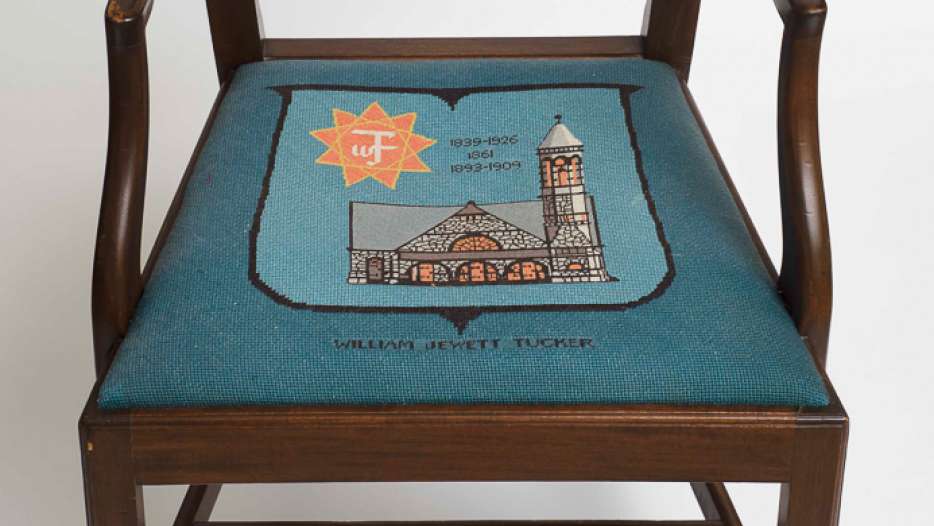
William Jewett Tucker, class of 1861 (1893-1909) President Tucker regularly delivered chapel talks. The orange symbol represents the William Jewett Tucker Foundation.
View full image
16 / 17
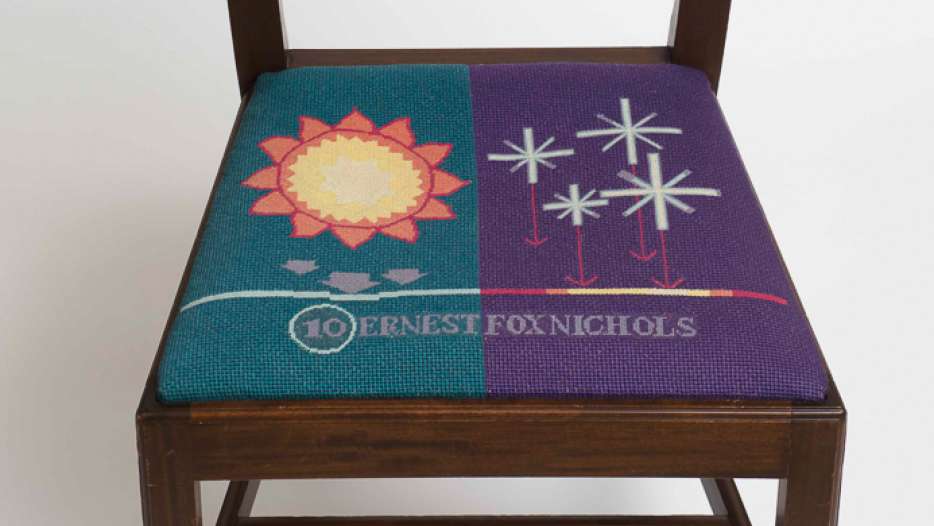
Ernest Fox Nichols (1909-16) Dr. Nichols was a distinguished scientist whose greatest achievement was weighing the pressure of light.
View full image
17 / 17
Displaying 1 - 17 of 17.



